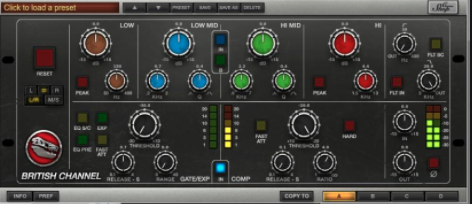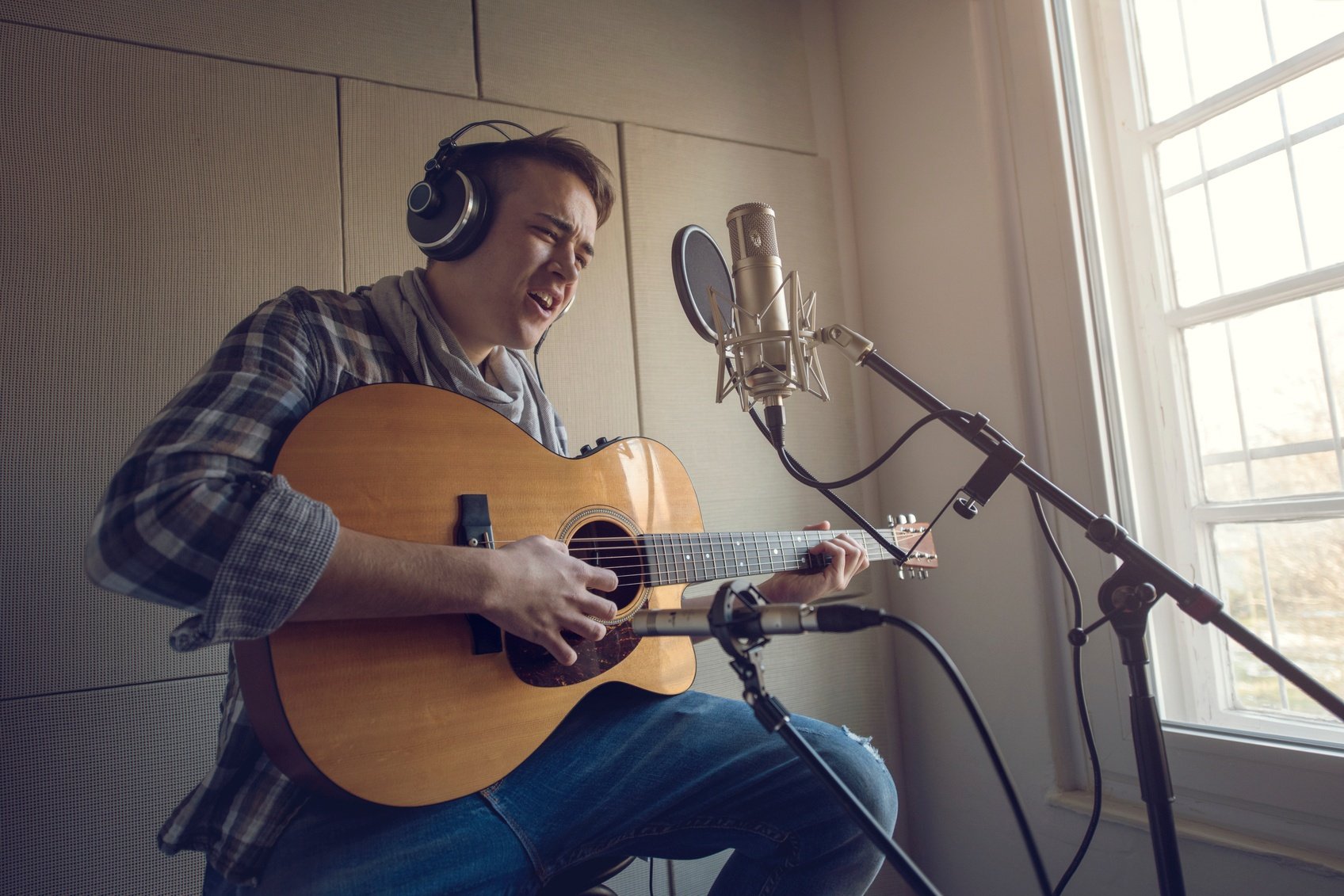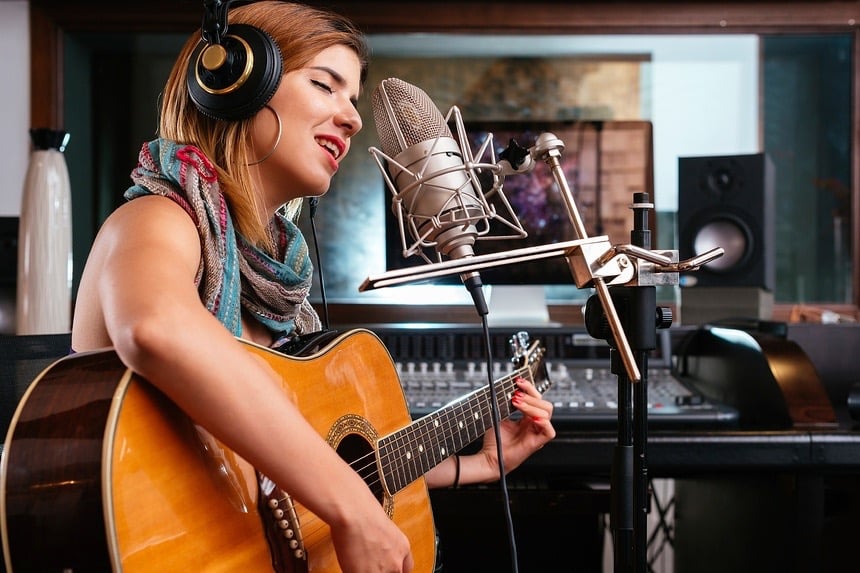6 Tips to Mix Vocals Professionally
In many genres of music, vocals are one of the most important parts of the mix. Listeners want the vocals to be front and center!
Especially in modern pop styles, several techniques make a vocal sound modern, interesting, and professional.
If you want your vocals to sound larger than life, you need to learn how to get your vocals to sound big, present, and in-your-face.
Regardless of your genre, in the article below, we will discuss several effects and tips you can use to make your vocals sound interesting.
Table of Contents
- Excellent Recording
- Reverb
- Top-End Boost
- EQ
- Control the Dynamics with Automation
- Level Up and Cut In the Right Places
Excellent Recording
You could spend hours and hours mixing and tweaking, but if the actual recording is subpar, then you're setting yourself up for failure.
It is critical to not be lazy during this part. Take the time to do multiple vocal takes and test out various microphones if you have the opportunity.
Accepting a poor recording and telling yourself you'll just "clean it up during the mix" is just doing yourself a great disservice. Take your time, be diligent, and get an excellent vocal recording. Click here for tips to improve a vocal performance.
Also, if you are recording the vocals at your home rather than a professional studio, check out our article describing common mistakes to avoid while recording in your home studio.

Reverb
Reverb could be called the holy grail of vocal effects.
Reverb is used on just about every vocal track to create a sense of space. We don't usually think about it at the moment, but reverb is all around us, all the time.
Reverb is defined as a series of many closely-spaced sound reflections that we hear as a continuous sound. To put it simply, reverb is the sound of a space.
Reverb can be captured naturally while recording a vocal, or it can be added in post-recording using DAW plug-ins that alter or enhance the qualities of a room.
We've become so accustomed to reverb that a vocal can sound pretty strange without it. If your vocals are sounding a little dry or you want to add some flare, reverb is a key effect to consider.
Top-End Boost
Top-end boost is perhaps the easiest and fastest way to make a vocal sound expensive.
Most boutique microphones come with an exaggerated top-end.
When you use a more affordable microphone, you can boost the highs to replicate this effect.
The best way to do this is with an analog modeling EQ, such as the free Slick EQ. Use a high shelf, and start with a 2dB boost at 10kHz.
You can experiment with the frequency and the amount of boost. You can go as low as 6kHz, keeping it subtle, and boost as much as 5dB above 10kHz.
Just be sure it doesn't become too harsh or brittle.
EQ
EQ, equalization, is used to sculpt the frequency content of vocals, instruments, and effects to make them sound good together in a mix.
There are three main categories producers use when referencing frequency content: lows, mids, and highs. The lows are sub and bass frequencies, and highs are the harmonics that give clarity and space to a mix.
Vocals are in the mid-range and can spill into the highs. Many instruments occupy the mid-range as well.
EQ is a valuable tool because it allows you to cut frequencies that occupy the same space as vocals, lending to a sense of balance in the final mix.
Listen to EQ in action. First, removing low frequencies, then the mids, then the highs.
Control the Dynamics with Automation
For a modern sound, the dynamics of vocals should be super consistent.
Every word and syllable needs to be at roughly the same level.
This often can't be achieved with compression alone, and automation should be used to level out the vocal manually.
Many people prefer to use gain automation to create consistency before the compressor. However, regular volume automation works well too.
Level Up and Cut In the Right Places
If the vocal was well recorded, one of the easiest ways to get huge vocals is to turn that vox channel up until it starts to "sit above" the music bed. Then you can grab a nice parametric EQ and sculpt the sound specifically to your liking.
An SSL emulation is a great choice here. Odds are there are specific bands of tone that are too built up. This is a natural effect of recording a human voice in a physical space.
The mic, preamp, room, and voice itself are likely to lead to a few frequency bands in a few places that stack up. These frequency buildups will usually be fairly obvious.
The usual culprits are room tone in the lower mids and mic proximity buildup in the low end. However, there can also be a little too much anywhere in the frequency spectrum for one reason or another.
A little attenuation in the right places can go a long way in smoothing the buildups and getting the vocal to sit back into the track, even while it's loud in level.
The Last Word
The tips discussed in this article can be used across all genres, styles, and BPMs.
Learning how to make your vocals sound interesting and professional is the key to creating your unique vocal sound.
With an understanding of the basics, you will be able to make quicker studio decisions and feel confident in them. If you're an aspiring professional vocalist, you need to check the Atlanta Institute of Music and Media.
AIMM is a great place to meet, practice, and be surrounded by aspiring musicians and producers like yourself.
AIMM provides students with the instructional environment necessary to develop their musical talents and acquire the skills demanded of today's professionals in the music industry. AIMM's unique programs combine organic instrumental performance concepts with valuable music production techniques.
AIMM offers:
- Music and Technology Associate Degree with a Focus in Guitar, Voice, Drums, Bass, or Keyboard
- Music Production and Audio for Media Associate Degree
- Online Certificate in Music and Technology with a Focus in Guitar or Bass
- Certificate in Music Production
Not only will you be inspired by talented peers, but you'll also be learning from industry-leading instructors.
To learn more about the Atlanta Institute of Music and Media, click the button below.















